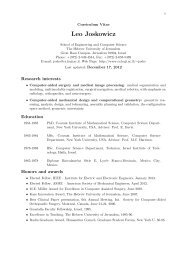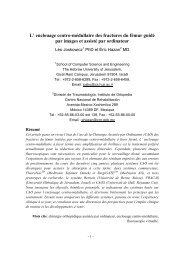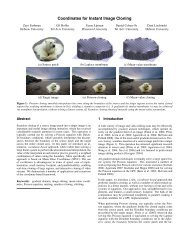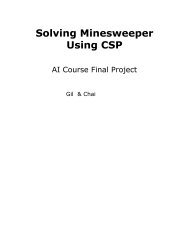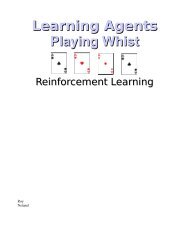TEL AVIV UNIVERSITY Gaddi Blumrosen
TEL AVIV UNIVERSITY Gaddi Blumrosen
TEL AVIV UNIVERSITY Gaddi Blumrosen
You also want an ePaper? Increase the reach of your titles
YUMPU automatically turns print PDFs into web optimized ePapers that Google loves.
Where these components are referred to as:<br />
s ( , ) is large scale fading (called also Long term fading or shadowing)<br />
and caused by reflection and diffraction from constant large scatterers,<br />
sometimes called shadowing effect.<br />
is small scale fading (called also Short term fading) is caused by<br />
variations of scatterers surrounding the transmitter and or the receiver.<br />
tr <br />
l ( , ) tr <br />
Note:<br />
In some notations in literature, large scale fading is referred to as slow fading and<br />
Small scale fading is referred to as fast fading.<br />
With the far field assumption, we can express the fading as function of the angle from<br />
the vertical to the ULA axis (see figure 1) and time<br />
( t, )<br />
s ( t,<br />
)<br />
l<br />
( t,<br />
)<br />
(2.5)<br />
Fig. 2 below (taken from [23]), shows short term fading , long term fading and mean<br />
path loss as a function of source distance in a typical wireless channel.<br />
Figure 2: LOS, slow and fast fading<br />
Fading can be viewed also in time, frequency and space domains.<br />
Time-selective fading<br />
Time-selective fading is caused by variations in time due to scatterers surrounding the<br />
transmitter and or receiver. Coherence time, Tc<br />
, is the time separation for which<br />
time-space correlation function of the channel impulse response at two times is<br />
sufficiently correlated (exceeding pre-determined threshold). The Coherence time is



